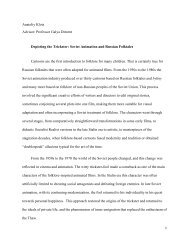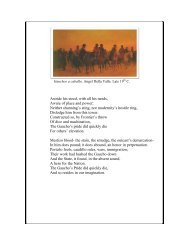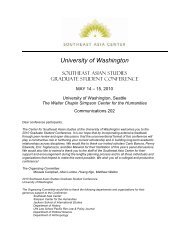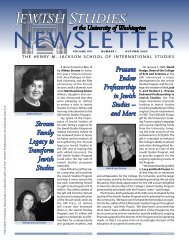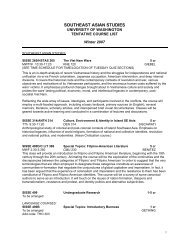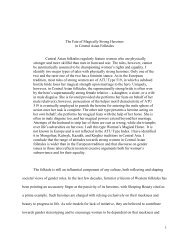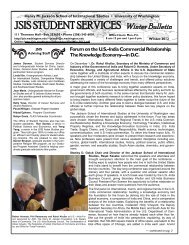Anatoliy Klots Advisor: Professor Galya Diment Depicting the Trickster
Anatoliy Klots Advisor: Professor Galya Diment Depicting the Trickster
Anatoliy Klots Advisor: Professor Galya Diment Depicting the Trickster
Create successful ePaper yourself
Turn your PDF publications into a flip-book with our unique Google optimized e-Paper software.
Russian animation (also known as “multiplikatsiia”) dates back to 1912 when Wladyslaw<br />
Starewicz produced his first stop-motion film featuring trickster figure of <strong>the</strong> Cameraman, The<br />
Cameraman’s Revenge (Mest’ kinematograficheskogo operatora). His second short, The<br />
Dragonfly and <strong>the</strong> Ant (Strekoza i muravei), 1913 based on Ivan Krylov’s fable, bridged <strong>the</strong><br />
strong connection between literary works and animation that became so characteristic of Russian<br />
cartoons. After <strong>the</strong> October Revolution, <strong>the</strong> famous avant-garde director of Kino Glaz and Kino<br />
Pravda, Dziga Vertov, employed animation principles for some of his propaganda reels, and in<br />
1924 produced <strong>the</strong> first Soviet animation, Soviet Toys (Sovetskie igrushki) aimed at greedy<br />
NEPmen and <strong>the</strong> clergy. In <strong>the</strong> 1920s, Soviet animators, toge<strong>the</strong>r with o<strong>the</strong>r artists of <strong>the</strong> NEP<br />
era, had some freedom for experimentation and worked in several studios (most well-known was<br />
Mezhrabprom Rus’) where such acclaimed directors as <strong>the</strong> sisters Valentina and Zinaida<br />
Broomberg, Ivan Ivanov-Vano, and Ol’ga Khodataeva. Soon after Stalin became <strong>the</strong> sole Soviet<br />
leader, film studios were consolidated. Stalin had realized <strong>the</strong> importance of state control of <strong>the</strong><br />
movie industry. In 1936, soon after <strong>the</strong> establishment of <strong>the</strong> major film studios Mosfil’m and<br />
Lenfil’m, Soyuzmul’tfil’m was founded and became <strong>the</strong> main animation studio of <strong>the</strong> Soviet<br />
Union.<br />
As a result of <strong>the</strong> turn from <strong>the</strong> internationalism of <strong>the</strong> 1920s to <strong>the</strong> fusion of Bolshevism<br />
and nationalism in <strong>the</strong> mid-1930s, interest in Russian topics in art was revived. The Second<br />
World War became a turning point in rehabilitating imperial cultural values. Under <strong>the</strong><br />
leadership of Stalin, <strong>the</strong> Soviet government tried to kindle Russian patriotism and in <strong>the</strong> late<br />
1940s launched a campaign against <strong>the</strong> “cosmopolites” who kowtowed to <strong>the</strong> West. This turn to<br />
national <strong>the</strong>mes made prominent Soviet film and animation directors adopt folklore motifs and<br />
characters for <strong>the</strong>ir works. In <strong>the</strong> 1930s-1950s animated pictures were often based on Russian<br />
4



